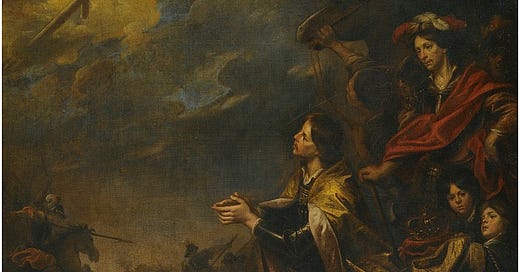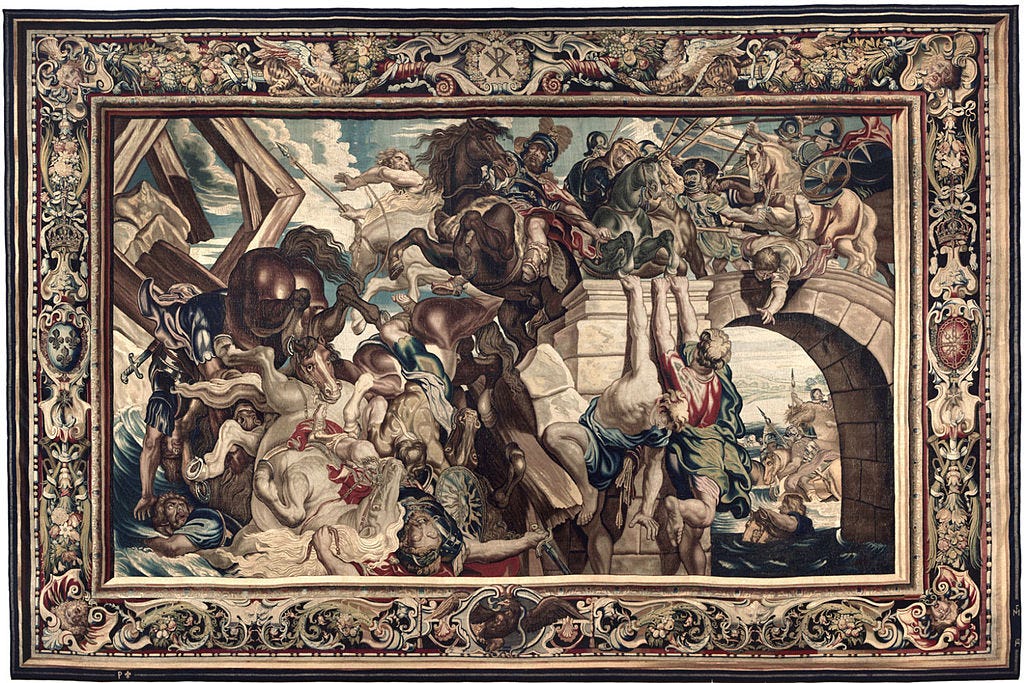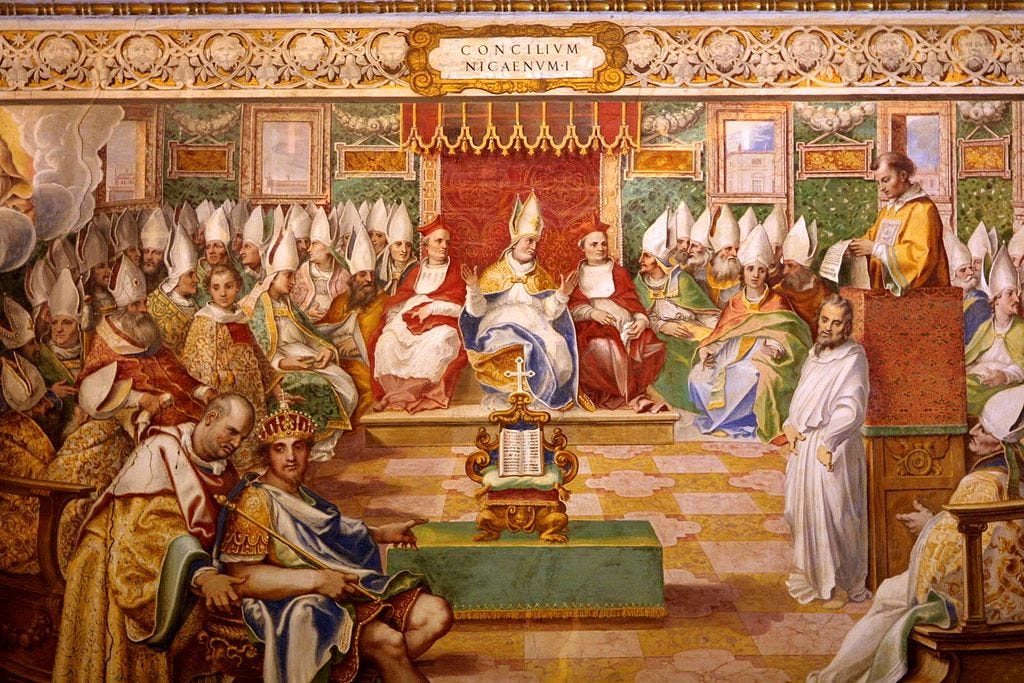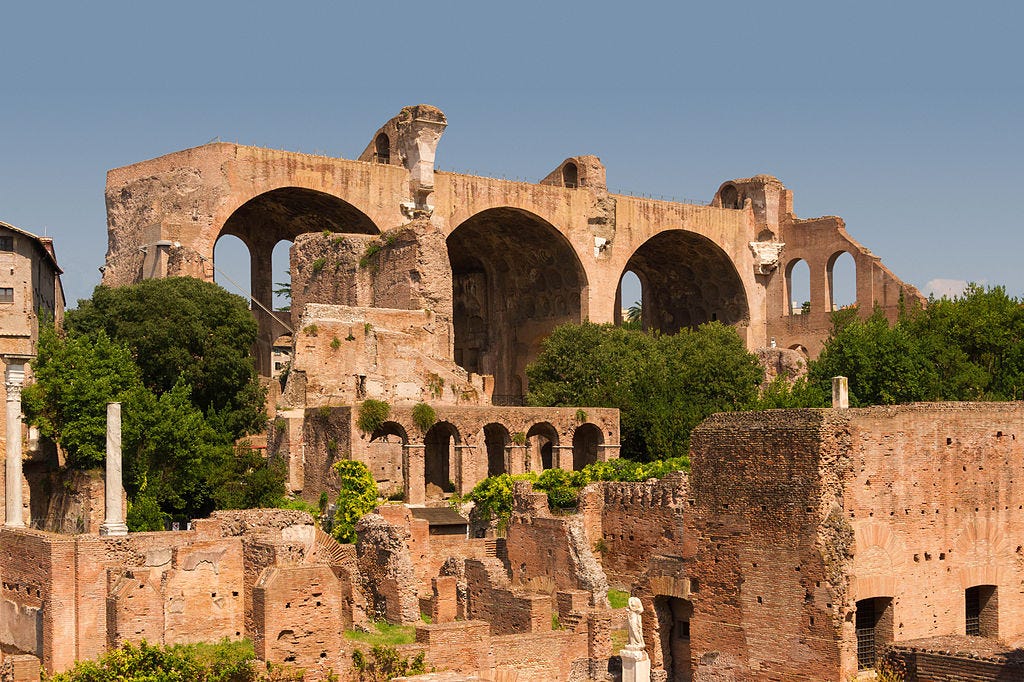Rome’s First Christian Emperor
More than 1,700 years ago this week, Constantine set out to take Rome
More than 1,700 years ago this week, the man who would become known as Constantine the Great—Rome’s first Christian ruler—was proclaimed emperor by his troops. His immensely consequential reign reunited and stabilized the Roman Empire, enacted crucial reforms, founded one of the most important cities in world history, and turned Christianity from a persecuted religion to a faith that would one day dominate the globe.
Constantine was son of a Roman military officer and a humble woman who was either an inn-keeper or a barmaid. He enrolled in the army at an early age and fought in several campaigns that took him from Persia to Egypt, before joining the court of the then-emperor Diocletian.
Constantine's vision of the Cross before the battle of the Milvian Bridge. Theodoor Boeyermans, between 1635 and 1678. Wikimedia.
Rome faced internal and external threats, including domestic instability and barbarian invasions during this turbulent time. Emperor Diocletian split the empire into four parts, each governed by a kind of “mini-emperor.” His rationale was that a multitude of rulers could better manage the overly large and unwieldy empire.
But four ambitious men with a taste for empire don’t easily maintain a balance of power and Diocletian’s arrangement proved a recipe for civil war.
Constantine’s father, Constantius, was eventually promoted to the position of mini-emperor of the empire’s western territory.. When Constantius died, Constantine’s troops declared him emperor—but he wasn’t the only man wanting to seize control. Constantine faced many years of war before becoming the sole Roman ruler, reunifying the empire’s four parts.
His most significant victory came over his rival Maxentius, whose army he crushed at the Battle of the Milvian Bridge in central Italy. According to some accounts, before the battle, Constantine saw a sign in the sky, the Chi Rho—the first two Greek letters in the name of Christ. Beneath the symbol was an inscription: “by this sign you shall conquer.” Constantine had the Chi Rho inscribed on his soldiers’ shields before facing Maxentius.
The Triumph of Constantine over Maxentius at the Battle of the Milvian Bridge, tapestry by Peter Paul Rubens, 1623-1625. Wikimedia.
The Battle of the Milvian Bridge, though perhaps not as well-known today as other battles like Gettysburg, Waterloo, or D-Day, was vastly significant for world history. Constantine converted to Christianity, attributing his victory to Christ’s help. When he took power in 313 A.D. the year after the battle, he issued the Edict of Milan, which legalized Christianity in the Roman Empire after the nascent faith had experienced centuries of persecution at the hands of pagan emperors. Christians could now openly pray, read Scripture, and gather together to worship without incurring the empire’s wrath.
Constantine’s mother Helena also converted to Christianity and had influence on medieval Christianity despite her humble origins. According to church tradition, while traveling through the Holy Land she found the original cross that Jesus was crucified on. She became a figure of legend in medieval Europe and was also “considered a model for a good Christian woman ruler.”
Constantine also convened the Council of Nicaea in 325 A.D. to settle one of Christianity’s major theological controversies. The Council released the statement of faith known as the Nicene Creed, recited by churches to this day, which defines the most basic tenets of Christian belief and the nature of Christianity’s Triune God.
The Council of Nicaea, fresno in the Sistine Chapel, The Vatican. Wikimedia.
Had legalizing Christianity been Constantine’s only accomplishment, he would still be remembered as a figure of massive historical influence. But the Edict of Milan was just one part of his agenda as emperor.
Constantine also founded the city of Constantinople, which became the capital of the Eastern Roman Empire (also known as the Byzantine Empire). Constantinople was founded on the site of the Greek colony of Byzantium. The city and the Byzantine Empire survived for more than one thousand years following Western Rome’s fall.
Situated on the Bosporus at the crossroads of vital trade routes between Asia and Europe, Constantinople became a wealthy center of culture, art, and religion. It remains to this day an important center of Orthodox Christianity and the home of the Patriarch of Constantinople. It also boasted a sophisticated system of fortifications that withstood many sieges throughout its history, as Christian Roman defenders repeatedly fought back attacks from would-be Muslim conquerors and kept Muslim armies away from Europe’s doorstep.
Constantine also instituted military reforms that increased the Roman troops’ mobility, and issued the gold coin known as the Solidus to combat inflation. This new coin became the “cornerstone of the new Roman monetary system throughout the 4th and 5th centuries.”
The ruins of the basilica Emperor Constantin first built in Rome after his victory stand in the background. Photo by Jebulon/Wikimedia.
Constantine had an enormous effect on history. He reunified a divided Rome, stabilized the empire so that Western Rome continued for more than a century and Eastern Rome for a millennium, and set Christianity on the path to becoming the world’s most prominent religion. Any one of these accomplishments taken individually would be enough to mark him as a memorable emperor—taken together, they solidify his legacy as one of history’s most pivotal figures.








